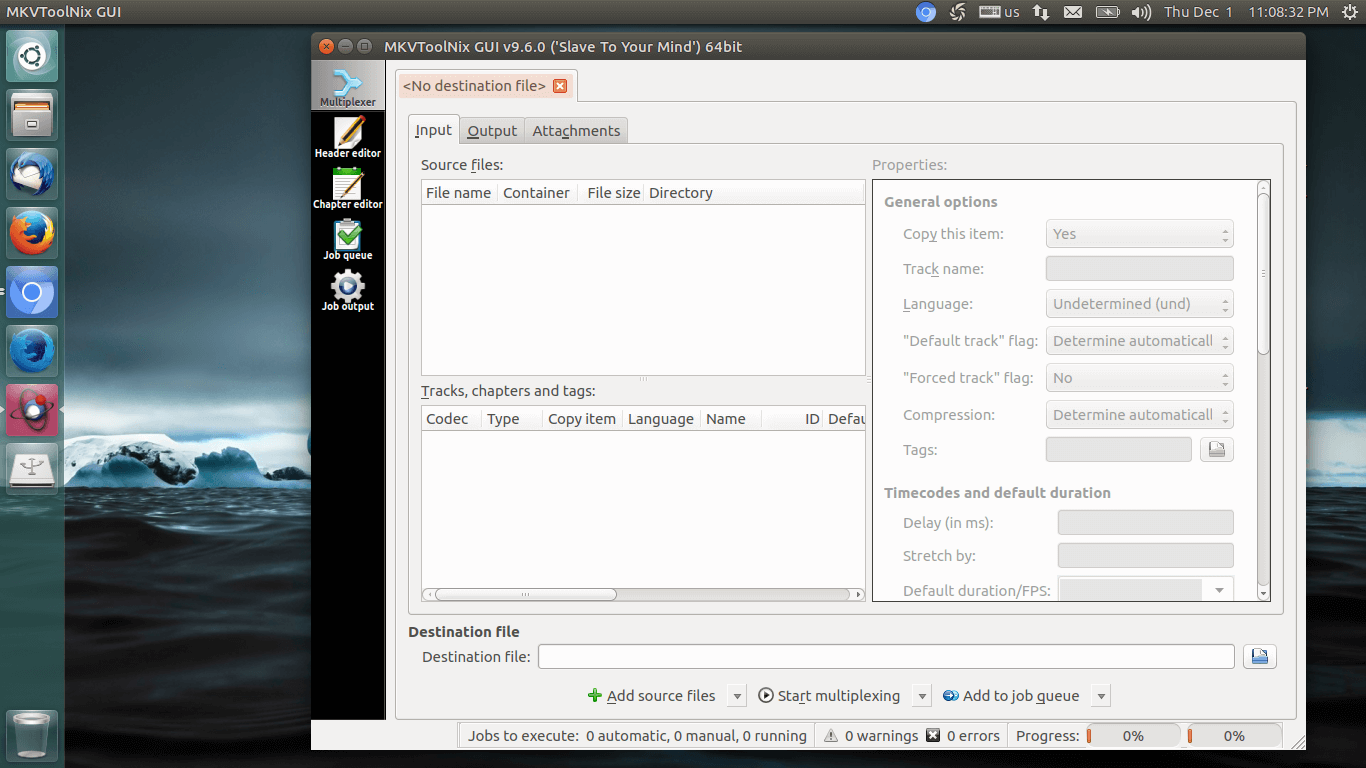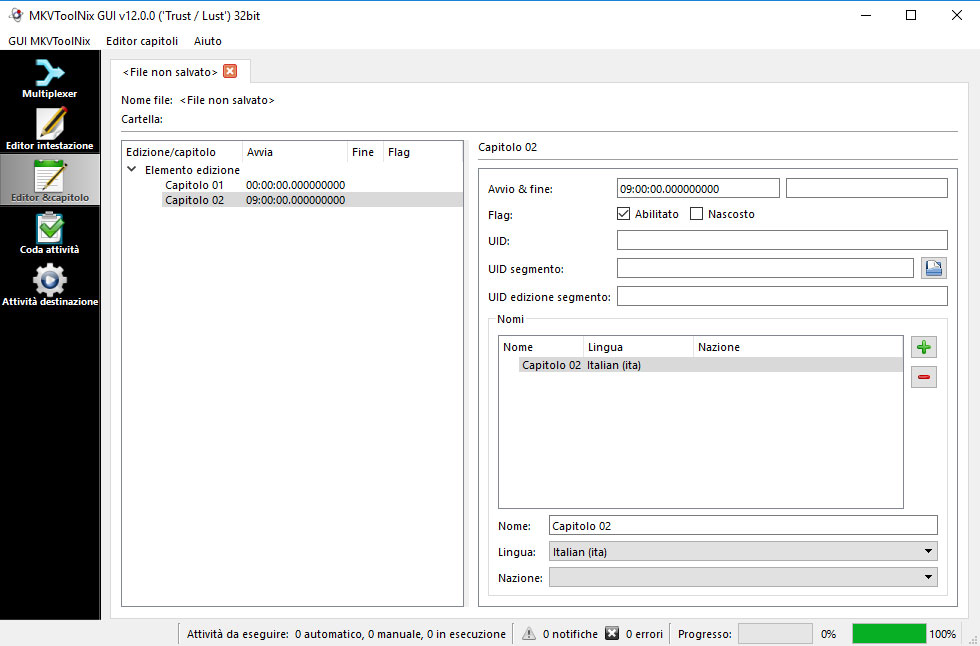Jan 28, 2021 In MKVToolNix, open a new tab if one is not already open. In the tab, click on the 'Output' tab, and on the right side of the window you'll find the 'Chapters' group. In the 'Chapter File:' field, click the blue folder icon to open a navigation window to open your chapter file. Navigate to your chapter file, select it, and click 'Open'. Mkvmerge's own documentation and the README files that are included in the mkvtoolnix package. Figure 1: Use this button to select the path to the mkvmerge program. The only thing that mmg needs to know is the location of the mkvmerge binary. The purpose of this HowTo is to join videofiles, when a movie was ripped and split into two or more files. (This happens usually with very long movies i.e. LOTR or more often back in the day when we had Video CD or DIVX CDs) The ultimate goal is to have the movie back in one file, so there is no trouble in the various Plex clients which do not support multi-part files. The tool used is. See full list on priede.bf.lu.lv.

The purpose of this HowTo is to split videofiles which contain more than one episode of a tv show into single-episode files. So they show up individually within plex, can be played individually and don’t produce any of the weird things that multi-episode files are plagued with.
The tool used is MKVtoolnixGUI
it is freely available for all major PC operating systems.
Therefore the container format of the output files will be MKV.
The input format can be a multitude of containers like AVI, MP4, MKV, MPEG, TS, DIVX and several more.
The quality of the files will remain the same, because mkvtoolnix only remuxes the files, it doesn’t re-encode them.
start up MKVtoolnixGUI
(depending on your operating system, this might look a little bit different)drag the multi-episode file into the window marked by my crude arrow
the video, audio and subtitle tracks it contains will appear in the window underneath it
you may want to revise the language code that is assigned to the audio track(s) and the language and ‘forced’ attribute of subtitle tracks so the Plex interface informs you correctly about the languages available.
Plex’s automatic audio and subtitle track selection feature relies also on these tags to work correctly.change to the Output tab:
change ‘Split mode’ to ‘after specific timecodes’
input the timecode of the episode break into the field ‘timecodes’ (you can input several timecodes [separated by comma] if your source videofile contains more than two episodes)
(I chose to split after 25 seconds, because my example file is only 59 seconds long)revise the path and filename in ‘Output file’ to your needs
click Start muxing
You should find 2 or more MKV files in the destination path, their file names appended by a three figure number (DVD Introduction-scene-001.mkv and DVD Introduction-scene-002.mkv for our example file in the screenshots)
Now rename the split episode files according to the Plex naming guide for tv show episodes and add them into your library.
Done.
If you set above as ‘Split mode’ = “Before Chapters”, you can split your files on chapter markers.
This is particularly useful when you have ripped tv shows and you got only one monolithic file instead of one file for each episode.
mkvtoolnix-gui(1) is a Qt(tm) based GUI for mkvmerge Xdj rx rekordbox setup. (1). It also implements mkvinfo(1)'s and mkvpropedit(1)'s functionality and will evolve to cover mkvextract(1) as well. All settings (e.g. source files, track options etc) can be saved and restored.

Mkvtoolnix Tutorial Audio
Listing configuration file names with the extension .mtxcfg causes the GUI to load the those configuration files in the appropriate tool. Any other file name is added as a source file for multiplexing, opened in the info tool, the chapter editor or in the header editor depending on the current mode. The current mode can be changed with --merge, --info, --edit-chapters or --edit-headers. Rdp rdc. The default mode is adding files for multiplexing.
Mkvmerge..multiple Files And Chapters
Note that if an instance of the application is already running when the application is started a second time, all file names given on the command line are handled by the already-running instance.

Need MKV Chapter With Video Preview
| Option | Description |
|---|---|
| --merge | All following file names will be added as source files to the current multiplex job. This is the default mode. |
| --info | All following file names will be opened in the info tool. Additionally the info tool will be selected on startup instead of the multiplexer tool. |
| --edit-chapters | All following file names will be opened in the chapter editor. Additionally the chapter editor will be selected on startup instead of the multiplexer tool. |
| --edit-headers | All following file names will be opened in the header editor. Additionally the header editor will be selected on startup instead of the multiplexer tool. |
| -h, --help | Show usage information and exit. |
| -V, --version | Show version information and exit. |
mkvmerge(1), mkvextract(1), mkvinfo(1), mkvpropedit(1)
The latest version can always be found at the MKVToolNix homepage.
